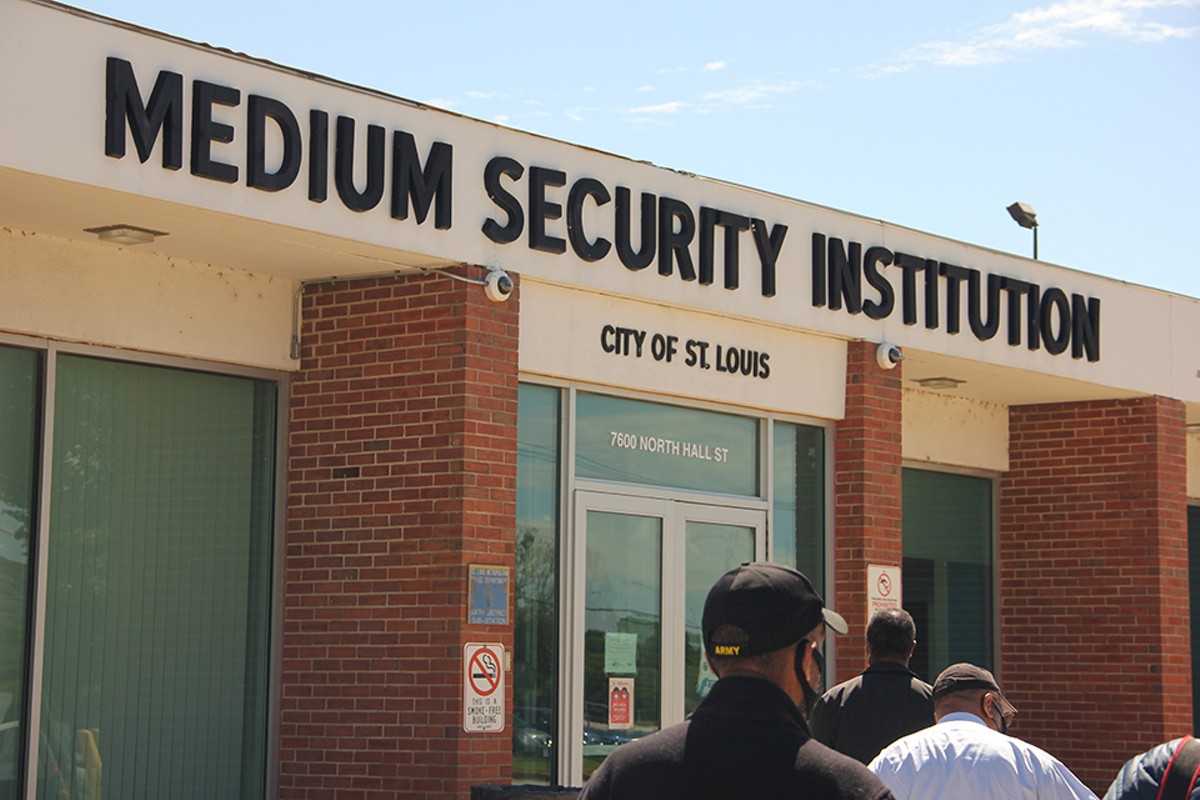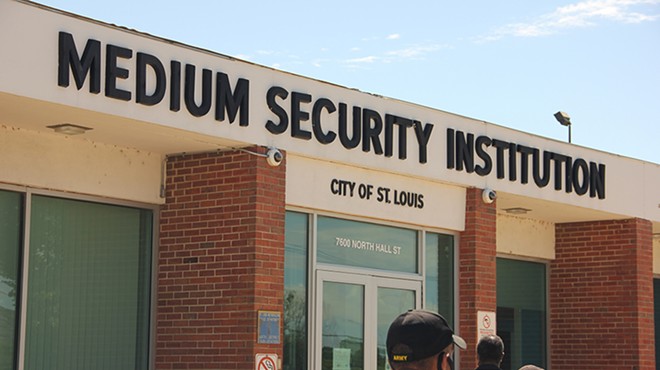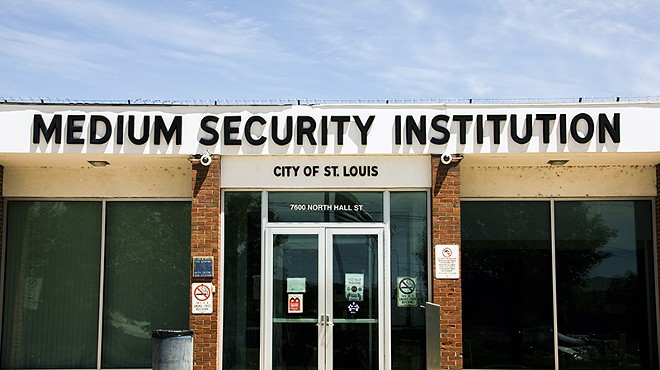St. Louis Mayor Tishaura Jones is considering building tiny homes for St. Louis’ unhoused population at the former site of the city’s Medium Security Institution, better known as the Workhouse. Her spokesman suggests she has little choice — that the Board of Aldermen have effectively blocked homeless shelters from going just about everywhere else in the city.
Activists who Jones once consulted on a future use for the Workhouse say she’s not wrong about that. They agree that NIMBYism is a huge problem. But the Workhouse, they say, is not the place for unhoused people. In fact, putting them there could be dangerous.
Jones has not officially announced her plan yet, but an article from the St. Louis Post-Dispatch cited information provided by a spokesperson who confirmed that it’s an option Jones is considering for the site, and an excerpt from an environmental report commissioned by the city suggests Jones’ office wants to find a way to make it work. The mayor’s office plans to share more detail at Thursday’s Public Safety Committee Meeting, spokesperson Conner Kerrigan told RFT.
Jones’ idea for the site comes after the committee of stakeholders she convened to examine the site published its Re-Envisioning the Workhouse Report in January. The report includes input from more than 2,500 St. Louisans and a survey of the community regarding how the 30-acre site should be used.
While the survey included the idea of using the site as a shelter or for affordable housing, the stakeholders on the committee who were directly impacted by the Workhouse said it should never be used for housing.
The survey sorted responses into four categories: members of the general population, members of the Black community, those who were incarcerated in the Workhouse or who had family who were, and those in the same ZIP code as the institution.
Members of the general population appear to have suggested the shelter idea — while those who were directly impacted by the Workhouse and those who lived in the same ZIP code as the institution were by and large against constructing shelters or housing on site.
“People most familiar with the site, its conditions and surroundings are more likely to oppose it as a place for human inhabitation (and public resources in general), than those who have more distance from the site,” according to the survey. “They are interested in seeing housing, but would like to see it off-site embedded within neighborhoods.”
Those living in the Workhouse’s ZIP code want to see vacant or degrading lots revitalized for housing and oppose placing a shelter or transitional housing at the site, the survey says.
Yet Jones is contemplating the site as a shelter because, according to her office, there is simply nowhere else to put one.
City ordinances make it “near impossible” to build a shelter anywhere within city limits, Kerrigan said.
“Those ordinances were passed via board bills at the Board of Aldermen pretty much tying our hands on, standing up unhoused facilities within heavily populated areas of the city within several wards,” Kerrigan says.
These ordinances have baked a level of NIMBYsm (Not in My Back Yard) into city laws, he says.
“The nice thing about the MSI facility is that’s a building we own,” Kerrigan says. “We wouldn't have to go through that same scrutiny because it's a building that the city owns.”
One of the main reasons activists give for opposing such a shelter is the toxicity and environmental concerns at site.
The site is located in an industrial area surrounded by trucking companies, freight trains and salvage. And while the environmental report commissioned by the city hasn’t been made public yet, the city provided screenshots from the report to the RFT showing that the levels of arsenic in the soil exceed residential standards and default target levels. It also said the lead levels exceeded the default target levels but were below residential standards.
Other areas at the site contained high quantities of the hazardous substances Benzo(a)pyrene and Benzo(b)fluoranthene.
“Since the site is to be used for residential purposes for the unhoused, PE recommends minimizing residential exposure in the vicinity of [the affected areas] by spreading clean fill (soil or gravel) over those areas,” the report states.
Inez Bordeaux, who was part of the steering committee for the Re-Envisioning the Workhouse report, was held at the Workhouse and knows firsthand the condition of the site, she tells RFT.
“I was in the Workhouse. So I know how it just smells weird there and how the water does have an odor and how it does taste funny and how there's always floods, the area or the facility itself, the land, it's always flooding in sewage backups, and things like that,” Bordeaux says.
In addition to the toxicity of the site, it is isolated from people and resources, cut off from transportation lines and is located in a food desert, Bordeaux says.
The mayor’s office says it would be adding transportation lines to connect people staying on site with the rest of the city, but was unsure of how much this endeavor would cost.
“They deserve far better than this plan the mayor is coming up with,” Bordeaux says. “I frankly think it's quite disgusting. The optics of rounding up all of the unhoused people and dropping them off in the middle of nowhere, where they do not have access to even other people.”
Bordeaux says problems with housing people at the Workhouse aren’t just environmental or practical. They are symbolic and emotional.
“It would be a slap in the face to not only every person that's lost their life to the Workhouse, but every person that survived the Workhouse,” Bordeaux says. “The last thing we need to do is take another vulnerable population that needs help with an unmet need, and throw them away at the Workhouse.”
Bordeaux agrees that there is a sense of “NIMBYsm” among the aldermen, but says it should not be used as an excuse to house the community at a toxic site. Instead, she wants to see the mayor use the powers of her office to work with the board to find housing and shelters in the city’s wards.
“We don't have to take the unethical or immoral way out, we can sit down together and figure out how to solve this crisis. We have the money, we just need the political will to do this the right way and to handle this situation at the Workhouse the right way,” Bordeaux says. "This is not the solution to the problem that we are having.”
The mayor’s office could not provide a concrete answer as to what happens next if Jones chooses to pursue her tiny house plan. When asked whether the decision would be approved solely by Jones or if it would go before the Board of Aldermen, her office said, “As for approval over what happens/next steps after the Mayor makes a decision, that is dependent on what route we choose to take.”

Re-Envisioning the Workhouse
Instead of housing people, with some remediation, Bordeaux believes the site would be perfect for housing animals. CARE STL has stated it hopes to use the site as a shelter and would fundraise the needed capital to remediate the site, she says.
This would also be a good opportunity to allow unhoused community members with pets to stay at the site on a “very temporary” basis while they receive veterinary care and services, Bordeaux says. Currently it is impossible for these individuals to access shelters in the city with their pets.
Other options the stakeholders’ committee suggested to the mayor include turning it into prairie land, a solar farm or an industrial use, where the Workhouse could be sold to one of the neighboring companies and the funds from the sale used to help the unhoused.
Now that the committee has compiled its findings, activists are focusing on three objectives: adopting the recommendations in the report, funding a “memorial resource hub” with resources for people who were detained in the Workhouse and providing reparations to Workhouse survivors, according to the Close the Workhouse campaign.
The Board of Aldermen’s Public Safety Committee will discuss the Re-Envisioning the Workhouse report and plans for the site on Thursday at 2 p.m.
Currently, Magdala House partners with the city to provide tiny home housing and services to the unhoused community. Overall this endeavor has been successful, CEO Thomas J. Mangogna says, but the organization hopes to expand if the city allows them to.
As of March 25, Magdala House had not been contacted regarding the possible expansion to the Workhouse site. Mangogna says the site is not currently at full capacity and has some homes open for occupancy.
Follow us: Apple News | Google News | NewsBreak | Reddit | Instagram | Facebook | Twitter | Or sign up for our RSS Feed










